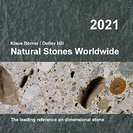
In rocky, snowy splendor, Utah's Wasatch Mountains rise as high as 12,000 feet above sea level, barely a mile east of the Utah County Courthouse in Provo, UT. Completed in 1926, and designed by Joseph Nelson of Provo, the neoclassic courthouse sits in the morning shadow of the great range. Yet even here, on this venerable building, in this seemingly pristine environment, the heavy hand of acid rain has left its destructive mark. People might think that acid rain is an unlikely culprit in Provo, which has a population of 105,000 and is located far from eastern industries, West Coast smog and vast cities that count their citizens in the millions. But unfortunately, the city was plagued by a Utah County steel mill -- now shut down and dismantled -- that had pumped pollution into the mountain air for decades, according to John Lambert of Abstract Masonry Restoration in Salt Lake City, UT, and Boston, MA. That pollution reacted with water and oxygen in the atmosphere to create mild solutions of sulphuric and nitric acids which fell -- and fall -- on Provo as acid rain.
"Utah County is one of the fastest growing areas in the country," said Lambert. "The steel plant is gone, but vehicle exhaust is taking its place." In 2006, with the acid-rain damage to the courthouse's limestone glaringly plain to see, the county turned to Lambert for help. As both historic restoration consultant and contractor, he was uniquely positioned to make recommendations, and then implement them exactly.
His prescription included a mild cleaning, careful removal of delaminating stone and treatment with solutions for acid-rain resistance and water repellency. Since the building was not very dirty, the Abstract Masonry Restoration crew limited their cleaning procedure to lightly pressurized steam and hot water. The same gentle washing technique removed loose stone, according to Lambert. "We only removed delaminated layers already so loose that a strong wind or fingernail could have taken them off," he said. One reason for the soft approach was the fragile nature of the stone itself, Lambert explained. "It's a beautiful white Sanpete County oolitic limestone," said Lambert. "But it's not the most practical building stone, since it's significantly softer and more porous than most of the higher quality limestones in the country."

Determining the right treatment
In late June, with the building cleaned and prepped, Lambert's team began treatment with PROSOCO's Conservare HCT (Hydroxylating Conversion Treatment). The odorless, waterborne solution penetrates the limestone, creating a well-adhered and acid-resistant "conversion layer," which strengthens the limestone and dramatically increases its resistance to acid rain and normal weathering. The layer is microscopic. To see any change in the stone's surface, you have to magnify it about 500 times. Several weeks of testing preceded application to establish the most effective procedure, according to Lambert. The procedure included three consecutive applications of HCT with cure times of 30 minutes to an hour between, at a coverage rate of 30 square feet per gallon.
"We had two two-man crews with low-pressure sprayers, working from lifts," said Lambert. A fifth man was on the ground, coordinating and controlling. The crews followed each other. After one crew treated a section, they moved on to the next section. The next two-man crew let the section cure, then re-treated it, until the entire building had gotten three full "cycles," as well as a coating of PROSOCO's HCT Finishing Rinse. The rinse, also applied with low-pressure sprayers, completes the reaction that forms the conversion layer. The Abstract Masonry Restoration workers followed the HCT with application of Sure Klean Weatherseal Natural Stone Treatment, also from PROSOCO. The penetrating, breathable water-repellent is made specifically for calcareous stones -- limestone, marble and travertine.
"We chose Natural Stone Treatment after tests showed that it not only repelled water, but that it didn't affect the appearance of the stone," said Lambert. Even though the courthouse was treated with HCT, the Natural Stone Treatment still penetrated. Crew members gave the stone two applications, with the second coat going on minutes after the first -- a technique called "wet on wet."
Overcoming obstacles
Provo's arid climate posed a challenge. High desert sun, hot walls and humidity as low as 10% meant that the treatments could evaporate before they had a chance to penetrate. To avoid evaporation, the crews timed applications so that they were always in shade, and on walls that had either cooled down or had not yet gotten hot. By project's end, the team had strengthened and weatherproofed nearly 25,000 square feet of historic limestone -- preserving appearance and improving durability. It was a job that gave Lambert particular satisfaction.
"For years, I've witnessed the damaging effects of acid rain on our country's calcareous stone buildings," he said. "It's very gratifying to know that we've done all that current technology allows to properly preserve and protect -- an important element in the cultural heritage of the people of Utah."



